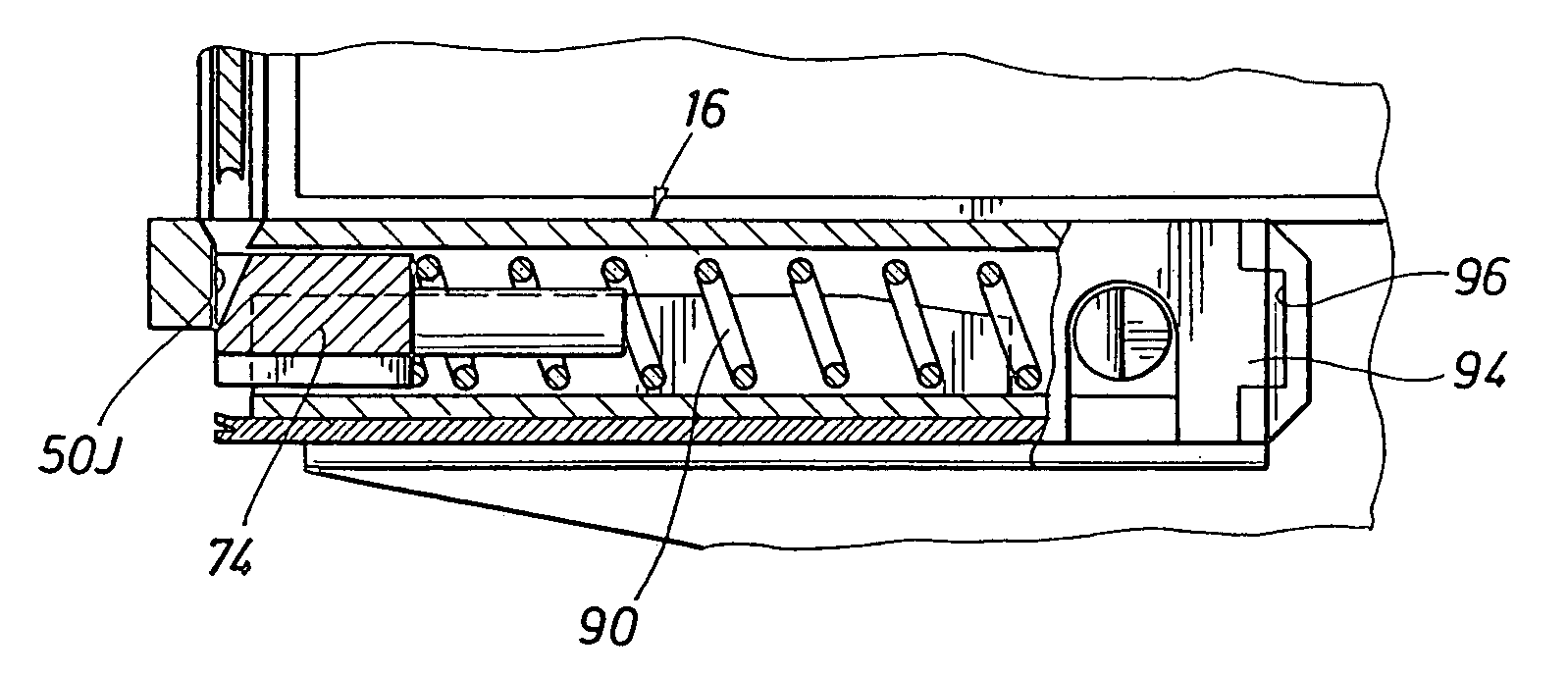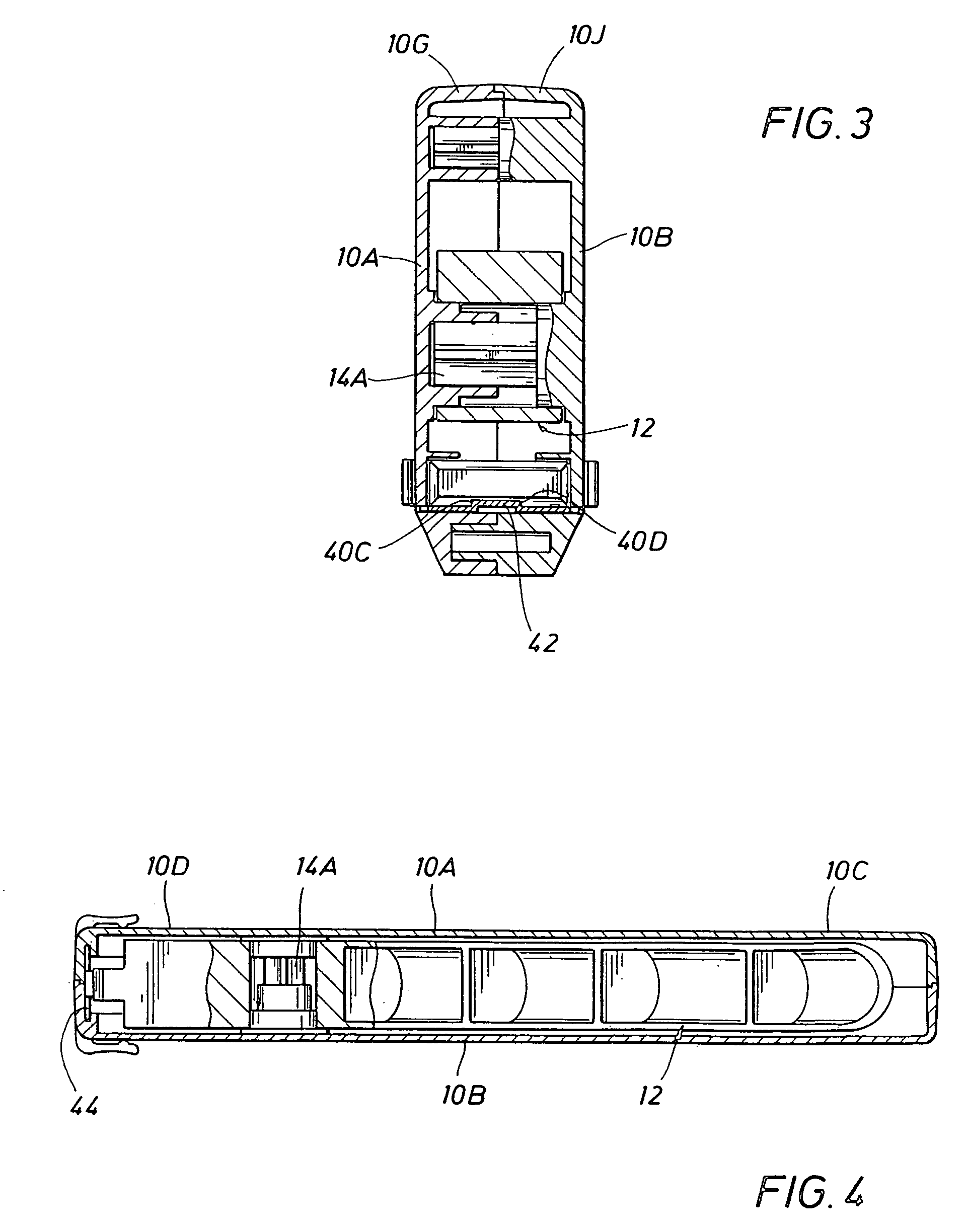Surgical stapling device
a stapling device and surgical technology, applied in the field of health care devices, can solve the problems of inability to afford current available surgical staple devices and supplies, inability to take advantage of stapling technology, and high cost of surgical staple devices, so as to prevent damage to the staple former
- Summary
- Abstract
- Description
- Claims
- Application Information
AI Technical Summary
Benefits of technology
Problems solved by technology
Method used
Image
Examples
Embodiment Construction
[0042]As shown in FIG. 1, the surgical stapling device of the present invention comprises a body member, generally indicated as 10, and a trigger member 12 movably positioned with the body member 10. As best shown in FIG. 5, the trigger member 12 is pivotally movable about a trigger pivot opening 12C. Preferably, the body member 10 comprises a right body member half 10A and a left body member half 10B. The body halves are assembled in mated relationship, as best shown in FIG. 5. Also as shown in FIG. 5, the trigger pivot opening 12C is received about right trigger pivot male member 14A and a left trigger pivot female member 14B that are interengaged in a mated relationship. As best shown in FIG. 4, the body member 10 has a rearward portion 10C constituting a handle portion and a forward portion 10D. As best shown in FIGS. 6 and 7, a staple cartridge 16 is located within a staple cartridge recess 18 in the forward portion 10D. Returning to FIG. 1, the rearward or handle portion 10C o...
PUM
| Property | Measurement | Unit |
|---|---|---|
| insertion angle | aaaaa | aaaaa |
| insertion angle | aaaaa | aaaaa |
| insertion angles | aaaaa | aaaaa |
Abstract
Description
Claims
Application Information
 Login to View More
Login to View More - R&D
- Intellectual Property
- Life Sciences
- Materials
- Tech Scout
- Unparalleled Data Quality
- Higher Quality Content
- 60% Fewer Hallucinations
Browse by: Latest US Patents, China's latest patents, Technical Efficacy Thesaurus, Application Domain, Technology Topic, Popular Technical Reports.
© 2025 PatSnap. All rights reserved.Legal|Privacy policy|Modern Slavery Act Transparency Statement|Sitemap|About US| Contact US: help@patsnap.com



